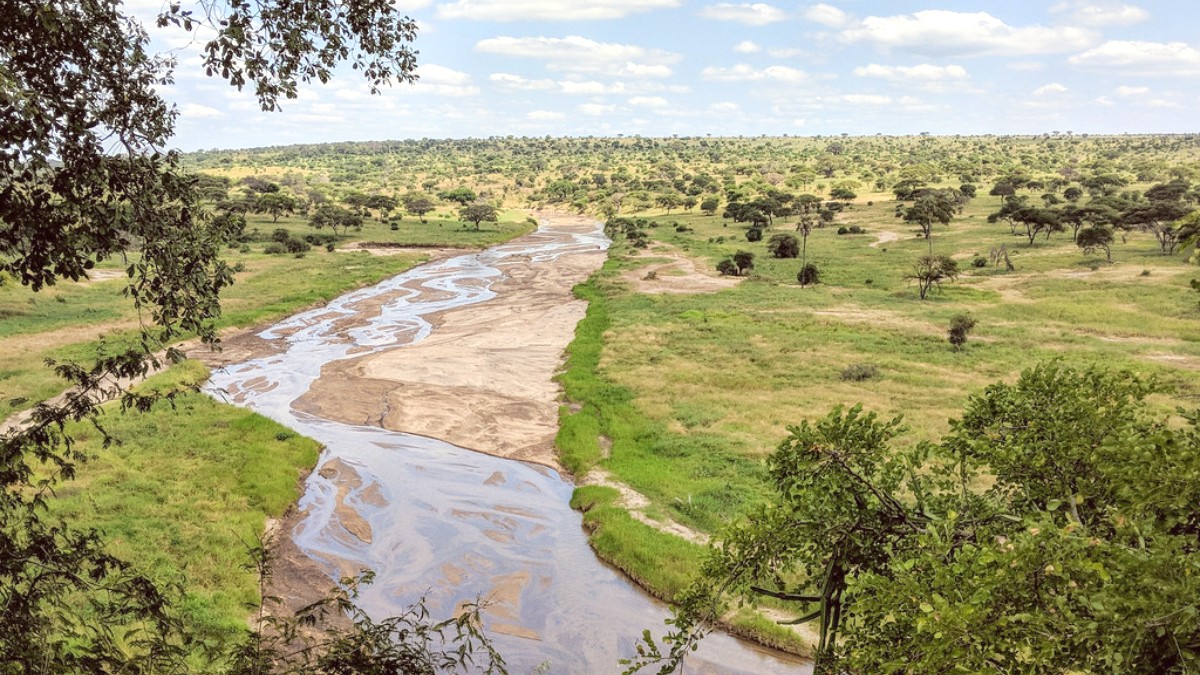
Northern Tanzania, Tanzania
Tanzania's coastal areas, historically linked by trade to the Arabian Peninsula and India, created a distinct Swahili cuisine. This cuisine, with its rich spices and coconut milk, spread inland.
In Arusha, coastal influences blend with the agricultural harvest of the northern highlands and the pastoral ways of groups like the Maasai. Staple foods are often starch-based, giving energy, and usually with a protein or vegetable stew. Sharing meals is deep in the culture, a symbol of hospitality and community.
While general Swahili cuisine is common across Tanzania, northern Tanzania, around Arusha and Moshi, shows influences from highland farming communities and Maasai pastoralists. Nyama Choma (grilled meat) is very popular here, often with ugali or kachumbari (fresh tomato and onion salad). Abundant fresh produce from Mount Meru and Kilimanjaro slopes always mean fresh fruits and vegetables.
Grilled meat is a culinary cornerstone, especially for social gatherings.
The fertile region around Arusha ensures a steady supply of fresh fruits and vegetables.
Highland influences lend unique characteristics to local dishes, differing from coastal fare.
Arusha offers dishes for a true taste of Tanzania. Seek these for a genuine culinary experience.
Ugali, the national staple, is a stiff porridge made from maize flour, with a neutral taste, serving as a scoop for stews. Nyama Choma, grilled meat (beef, goat, or chicken), is simply seasoned and cooked over charcoal until tender and smoky.
Find these widely at local eateries.
Pilau is fragrant spiced rice with meat or vegetables, rich in cloves, cinnamon, and cardamom. Wali na Maharage is a simple, nutritious meal of rice and beans in a light sauce, common and affordable.
Pilau is a celebratory dish; Wali na Maharage is found everywhere.
Chapati is a thin, unleavened flatbread. Mishkaki are skewered, grilled marinated meat pieces (beef or chicken), popular street food often with chips.
Chapati is a versatile snack; Mishkaki is a popular street food.
Grilled fish, often tilapia or snapper, coated in a rich, flavorful coconut and spice sauce. More common in coastal areas, but also found in some Arusha restaurants.
A hearty and flavorful stew with plantains and meat (often beef). A comforting and filling dish, using local produce.
Arusha has dining experiences from simple street food to more formal settings, for different preferences and budgets.
Limited in Arusha city. Upscale safari lodges and hotels on the outskirts or en route to national parks often have fine dining. These offer a blend of international cuisine, contemporary African dishes, and fusion menus. They present a sophisticated dining experience with a higher price.
Many options in Arusha city balance quality, ambiance, and price. These restaurants offer Tanzanian, Indian, and international dishes (e.g., Italian, Chinese). They suit a sit-down meal in a pleasant setting, often with outdoor seating. Popular choices are around the Clock Tower area.
Mama Ntilie: Small, local, informal eateries ('mother with a plate'), offer authentic, home-style Tanzanian dishes at low prices. Street Food Stalls: Around markets and busy streets, offer quick snacks like samosas, mishkaki (skewered grilled meat), mandazi, and chips mayai (fries omelet).
Common on safaris, with meals in scenic outdoor spots within or near national parks. A truly unforgettable meal.
Offers an immersive safari culinary experience.
A popular safari lodge experience where guests gather in a scenic spot (often with views of the bush or mountains) to enjoy drinks and snacks as the sun sets. A relaxing way to end a day of game drives.
Pairs well with the African sunset.
Abundant and refreshing juices from local fruits.
Learn about coffee production, sample freshly brewed Arabica.
Share a traditional meal in a Maasai village with cultural performances.
Often prepared with local spices, a popular choice.
Travelers with specific dietary needs generally find suitable options in Arusha, with advance planning and clear communication.
Awareness of gluten-free needs is growing but still limited in general Tanzanian restaurants. Speak about your dietary needs clearly. Ugali, made from maize flour, is naturally gluten-free. Rice and vegetable dishes are generally safe. For severe allergies, carry an allergy card translated into Swahili.
Be ready to self-cater for some meals or pick accommodations/tour operators that confirm specific meal preparation.
Learning a few Swahili phrases related to your dietary needs is valuable. "Mimi ni mboga mboga" (I am vegetarian) or "Sili nyama" (I do not eat meat) will greatly assist interactions.
This thoughtful effort is well received by locals.
Communication about allergens is growing but not universal. Clearly state severe allergies to confirm safety.
For unique dietary requests beyond common options, discuss directly with your host or guide.
Beyond eating, Arusha offers chances to immerse yourself in local food culture through interactive experiences.
Near Arusha National Park, a social enterprise employing people with disabilities to create high-quality handmade jewelry, glass items (from recycled bottles), and textiles.
Some guesthouses or local cultural tourism programs offer informal Swahili cooking demonstrations.
Coffee plantation tours in the Arusha/Moshi region are popular. Learn about coffee production from bean to cup.
Samosas (triangular pastries), Mandazi (sweet doughnuts), Chips Mayai (French fry omelet), Kashata (coconut/peanut snacks).
Quick, tasty, and affordable snacks for on-the-go exploration.
A sensory explosion offering fresh produce, spices, and prepared local foods. An immersive experience for local culinary exploration.
A true taste of daily local life and flavors.
Do not miss the chance to visit a local coffee plantation. It's a great experience, often including tours from bean to cup and tasting fresh Arabica coffee.
You will gain insight into the cultivation, harvesting, and processing of coffee, a major Tanzanian export, and its social impact.
Many tours end with a freshly brewed cup of coffee and sometimes a traditional lunch, making it a holistic culinary and cultural outing.
When exploring local eateries, look for places that are busy with locals. This is a good sign of fresh, tasty, and safe food.